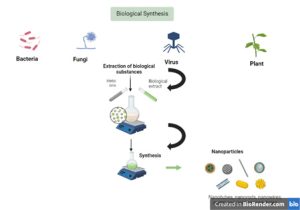
ABSTRACT
The production of nanoparticles with the use of microbes is a technology that is environment friendly. This paper highlights the use of a syndicate of various micro-organisms (bacteria, actinomycetes, fungi, and algae) for the amalgamation of various metallic and metal oxide nanoparticles. When compared to physical and chemical methods, which are expensive, complicated, hazardous, and produce toxic wastes that are detrimental to the environment and the health of a variety of living beings, the synthesis of nanoparticles through the biological route is not only inexpensive, but also environmentally friendly, sustainable, and does not require a significant amount of energy to complete. This is in contrast to the fact that the physical and chemical methods are responsible for producing nanoparticles, which is an energy-intensive Nanoparticles can be biosynthesized via extracellular or intracellular pathways, depending on the particular circumstances. Capping, enzymatic reduction, and metal capture are the three steps that are involved in the process of nanoparticle production by micro-organisms. The organisms as well as the parameters that are utilised, such as temperature, pH and substrate concentration, all play a role in determining the size and form of the nanoparticles. The biogenesis of these nanoparticles takes place in a short amount of time and results in particles that have the right size and form. These nanoparticles are reliable and risk-free, and they have a wide range of applications in a variety of fields, including drug administration, cancer treatment, gene therapy, agricultural biosensors, the cosmetics sector, and many others.
